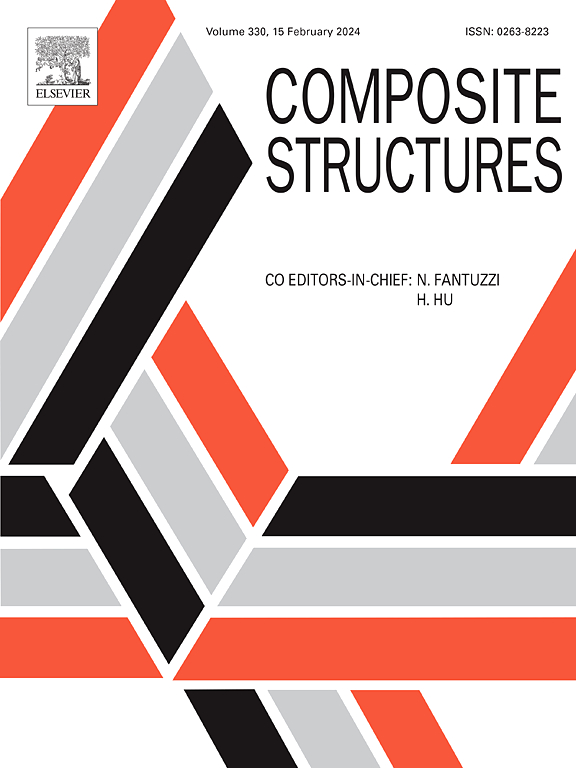Damage behavior and residual compressive strength of Carbon/Glass bionic spiral composites under multiple low-velocity impacts
IF 7.1
2区 材料科学
Q1 MATERIALS SCIENCE, COMPOSITES
引用次数: 0
Abstract
Based on the concept of bionic design, crossed-spiral structural composites with varying proportions of carbon fiber and glass fiber plies are constructed and fabricated. Through drop-weight impact testing, CAI (Compression After Impact) testing, ultrasonic C-scan and X-ray CT scanning, the damage mechanism and residual compressive strength of four crossed-spiral laminates under 1, 3 and 5 impacts with 15 J/times are characterized. Then, combining the experimental results, an integrated “single impact-multiple impacts-CAI testing” finite element model of carbon/glass bionic composite laminates is established and validated. On this basis, the configurations of bionic carbon/glass composite laminates with different ply sequences and spiral angles are investigated. The results indicate that for the impact resistance and damage tolerance of carbon/glass bionic composite laminates, the ply ratio and spiral angle have more significant effects than the ply sequence. Additionally, only by considering both the biomimetic crossed-spiral angle and the ply configuration on the impact side can the performance of the laminate be optimized to its fullest potential. The study findings can provide valuable guidance for the biomimetic design of composite structures with ultra-lightweight, multi-impact resistance, and high damage tolerance.
多次低速冲击下碳/玻璃仿生螺旋复合材料的损伤行为及残余抗压强度
基于仿生设计的理念,构建了不同比例碳纤维和玻璃纤维层的交叉螺旋结构复合材料。通过落重冲击试验、CAI (Compression After impact)试验、超声c扫描和x射线CT扫描,表征了4种交叉螺旋层压板在15 J/次的1、3、5次冲击下的损伤机理和残余抗压强度。然后,结合实验结果,建立并验证了碳/玻璃仿生复合材料层合板“单次冲击-多次冲击- cai测试”一体化有限元模型。在此基础上,研究了不同层序和螺旋角的仿生碳/玻璃复合材料层合板的结构。结果表明:碳/玻璃仿生复合材料层合板的抗冲击性和损伤容忍度受层合比和螺旋角的影响大于层合顺序。此外,只有同时考虑仿生交叉螺旋角和冲击侧的厚度配置,层压板的性能才能得到最大限度的优化。研究结果可为超轻、耐多冲击、高损伤容限复合材料结构的仿生设计提供有价值的指导。
本文章由计算机程序翻译,如有差异,请以英文原文为准。
求助全文
约1分钟内获得全文
求助全文
来源期刊

Composite Structures
工程技术-材料科学:复合
CiteScore
12.00
自引率
12.70%
发文量
1246
审稿时长
78 days
期刊介绍:
The past few decades have seen outstanding advances in the use of composite materials in structural applications. There can be little doubt that, within engineering circles, composites have revolutionised traditional design concepts and made possible an unparalleled range of new and exciting possibilities as viable materials for construction. Composite Structures, an International Journal, disseminates knowledge between users, manufacturers, designers and researchers involved in structures or structural components manufactured using composite materials.
The journal publishes papers which contribute to knowledge in the use of composite materials in engineering structures. Papers deal with design, research and development studies, experimental investigations, theoretical analysis and fabrication techniques relevant to the application of composites in load-bearing components for assemblies, ranging from individual components such as plates and shells to complete composite structures.
 求助内容:
求助内容: 应助结果提醒方式:
应助结果提醒方式:


